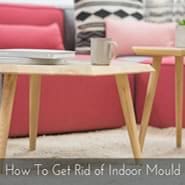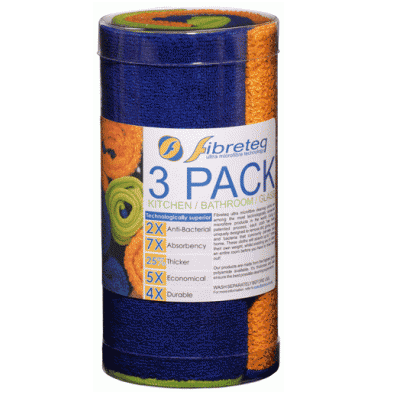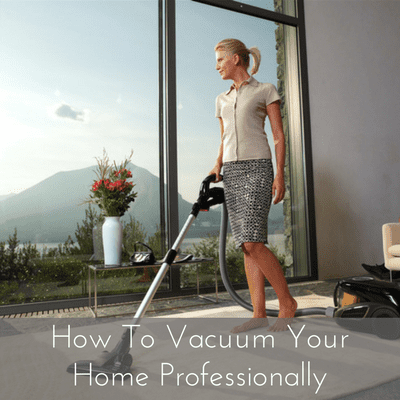When you have contaminated indoor air, it can be a challenging and time-consuming process to get it clear and fresh again. Sometimes your room can turn polluted within seconds!
We’ll explain the reasons your home got contaminated in the first place, then share a few methods to fix the polluted air. It won’t be such a challenging and time-consuming process if you follow these practices.
Why Do I Have Contaminated Air?
Contaminated indoor air can happen for a lot of reasons. We’ve broken it down into three leading causes.
The Environment
Everything around your home or outside your office can cause your indoor air to be contaminated. That includes weather, local industry and traffic, renovation and construction, trees and plants, gardens, pets and people, and mould
HOW TO:
How To Get Rid of Indoor Mould
Are you having guests coming over and now your indoors smell musty? Or are you the kind of person who constantly has black spots all on the walls no matter what you do? Does it seem like there is no way to get rid of the mould in your home?

Your Room Air Filtering System
If your air filtering system, that is either your windows and doors from out to in and vice versa, the air con and / or the air purifier, isn’t working properly, or you’re not running your filter systems at least 8 to 10 hours per day, you are at high risk for polluted indoor air. Your filter system continuously cleans the air in your sleeping and living spaces. Without it, you’ll have stagnant air that is more likely to become contaminated.
Chemicals
An excessive amount of chemicals can cause your air to be contaminated. That includes cleaning, personal care, for pets and garden, or other sanitizers, and highly perfumed and aromatic items.
Is Your Space Contaminated after Cleaning?
It’s important you clean your space every week with the proper amount of tidying, dusting and vacuuming for your room size. But sometimes you’ll get contaminated air after cleaning.
It’s common, and should dissipate over time. Just keep your air purifier or HVAC filter running, and it should clear up. Also, look into a good quality vacuum cleaner, and make sure you buy one that has a power head and a HEPA filter. Cheaper vacuums you can get from big retailers or on the internet are NOT the best choices.
How To Clear a Contaminated Space
Once you’ve fixed all the possible causes, you can work on a contaminated air fix. Three ways to clean and freshen your contaminated rooms are:
1. Tidy Away Clutter
It’s a good idea to tidy weekly. Clutter gathers tiny particles that are making your furnishings dusty, gather and bring them together to create bigger particles such as dust balls so that your microfibre cloth will have a better chance of picking them up.
Clutter is also known to facilitate stagnant air because the items “choke” the path of air flow so your furnishing materials are able to trap them. Most grocery retailers will carry more than one form of air freshener. Just read the advertising the chemical cleans, and you’ll be well on your way to a clear, clean indoors. NO WAY!
2. Use Microfibre Cloth and Dust
Are you looking for a better way to pick up the dust and dirt that have accumulated on hard surfaces? Instead of trying to vacuum the entire home or office, take a microfiber cloth and wipe the dust into one area first and then wash it or vacuum it away. This makes it much easier to clean the hard surfaces and floor than just using the vacuum. Just be sure you use a microfiber cloth suited to the task at hand and with sufficient quality that will still work effectively
PRODUCT:
Microfibre Cloth
Probably the one item you will use most of all, a microfiber cloth will let you easily remove dust, dirt and even sponge up water in a flash. After all, no one wants to breathe in air that is filled with floating dust particles or potential mould. So pick up a microfiber cloth and start removing those contaminants as you work to keep your indoor air clean once the cleaning week hits.

At this point, you’ll need to manually vacuum up that dust using your vacuum cleaner, not an automatic robotic cleaner. When vacuuming, your filter should be HEPA or as a brand new replacement. If you’re using a new filter, put a date on it to remind you when to replace it
VIDEO:
How to vacuum your room.
If you don’t have a good vacuum cleaner, or having air quality issues, you need to learn how to vacuum your home professionally.

The idea here is to vacuum up the dust contaminants directly OUT of your room because putting that much dirty air through your filter WILL CLOG it up and will send that dirty air right back into your room.
By vacuuming out the “dirt,” it will never run through your space. You’re going to get more dirt inside the house starting as soon as someone walks in the door, so keep your door mats at each entry clean.
Also, you must use a broom to sweep away the debris at the entry points. Air blowers will not work, and will disturb the fine dust created on the surfaces leading up to the entry points. It’s difficult, and you’ll use up a lot of time. But this method will clean your entries if done properly.
3. Use Your Filter System and Heating and Air Conditioning
Your space’s main HVAC is located at the upper heights of walls and clears the surface air. It does not collect the dusty particles that are at the bottom of the room. Knowing this, we need to help those particles get to the filter.
You can achieve this in two ways:
- Constantly stir up the air, by walking or with a dusting cloth or broom, so that it pushes the particles closer to the top of the room.
- Open the doors and let the breeze in.
Every indoor space is equipped with one or two doors, so it’s easy to use them for this purpose. This method allows the flow of air to start pulling air from the floor, where the dusty particles are, then circulate the clean air to the top.
But what if you have a space that doesn’t have air flow?
We have a little trick to mimic the effect of a draft along the floor of your space: Hook up your electric fan and place it on the floor at the end of your room. Then turn it on low. Your fan will gently blow air from along the floor of your space using air flow or draft, then release the surface particles into the air to be either blown out the doors and windows, vacuumed up, captured by your HVAC or through your air purifier.
There you have it! Three methods to clear a contaminated space using your space’s equipment. Check out some of our recommended reading articles to get more information about contaminated indoor spaces.
Towards healthier living, Carol Parr ♥
As Principal Consultant to Mitey Fresh since 1996, I have acquired knowledge of adverse health effects at the client’s properties and recommend effective strategies to reduce occupants’ exposure by eliminating and controlling as many sources of pollutants in order to create healthy indoor living environments that are as exposure-free and natural as practically possible.
Author
-
We’re glad you’re here. We’re Carol and Tony, founders of one of the longest running Healthy Home Blogs in the world, Mitey Fresh Australia. We’ve been on this journey for the last 25 years and are passionate about helping families sift through health hazards and triggers like allergens, mould, water damage, chemicals and EMFs, to get clarity about what’s toxic and what’s not so they can create a healthy and happy home for their family they love. Each month, people visit this blog seeking focus on the health and wellbeing of their loved ones, sustainable and effective practice tips and guides, to help create and manage healthier indoor spaces, improve the built environment that is pleasing to the senses and support healthy living and nature, every day. Starting this blog was to help change people’s lives, one family at a time, and we can’t wait to share how its allowed us to stand next to you and show you how interpreting these synergies between buildings and the environment they are built in will impact upon the health and well-being of those who occupy them. Find out more about Healthy Homes and what this blog can do for you!





